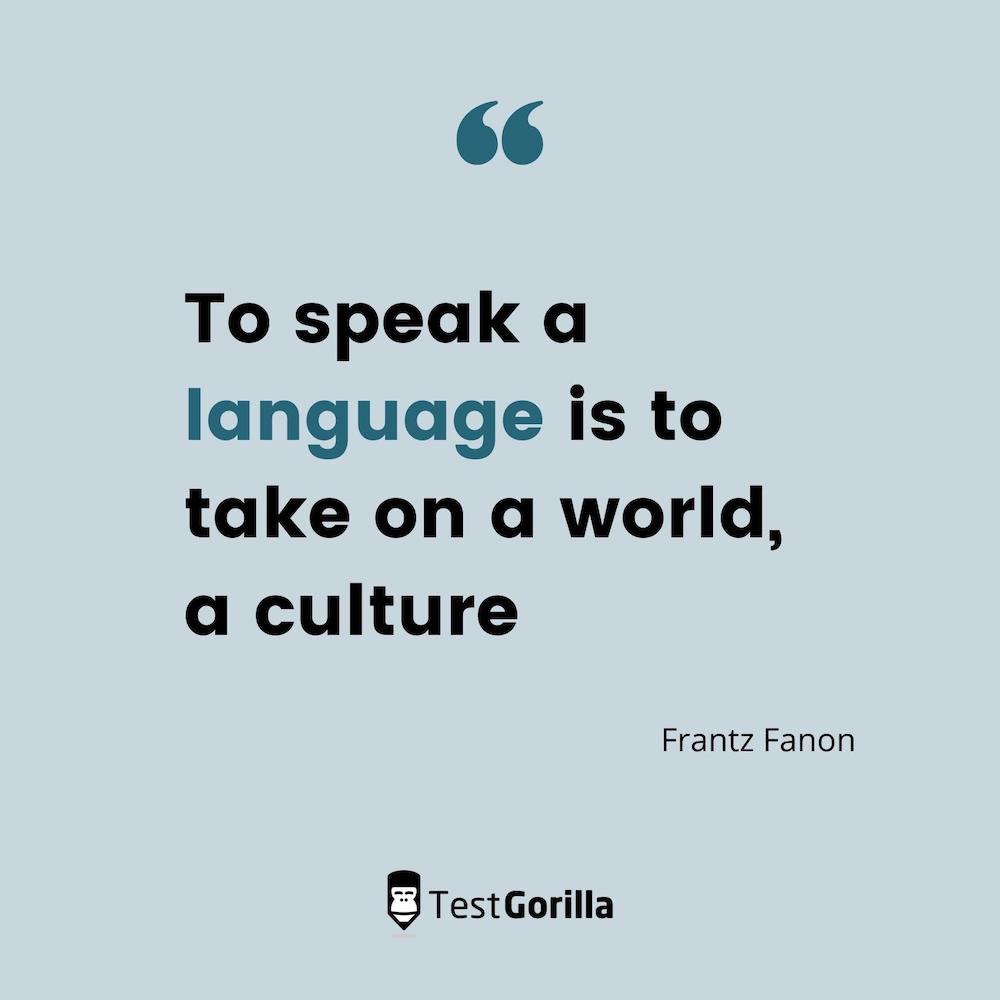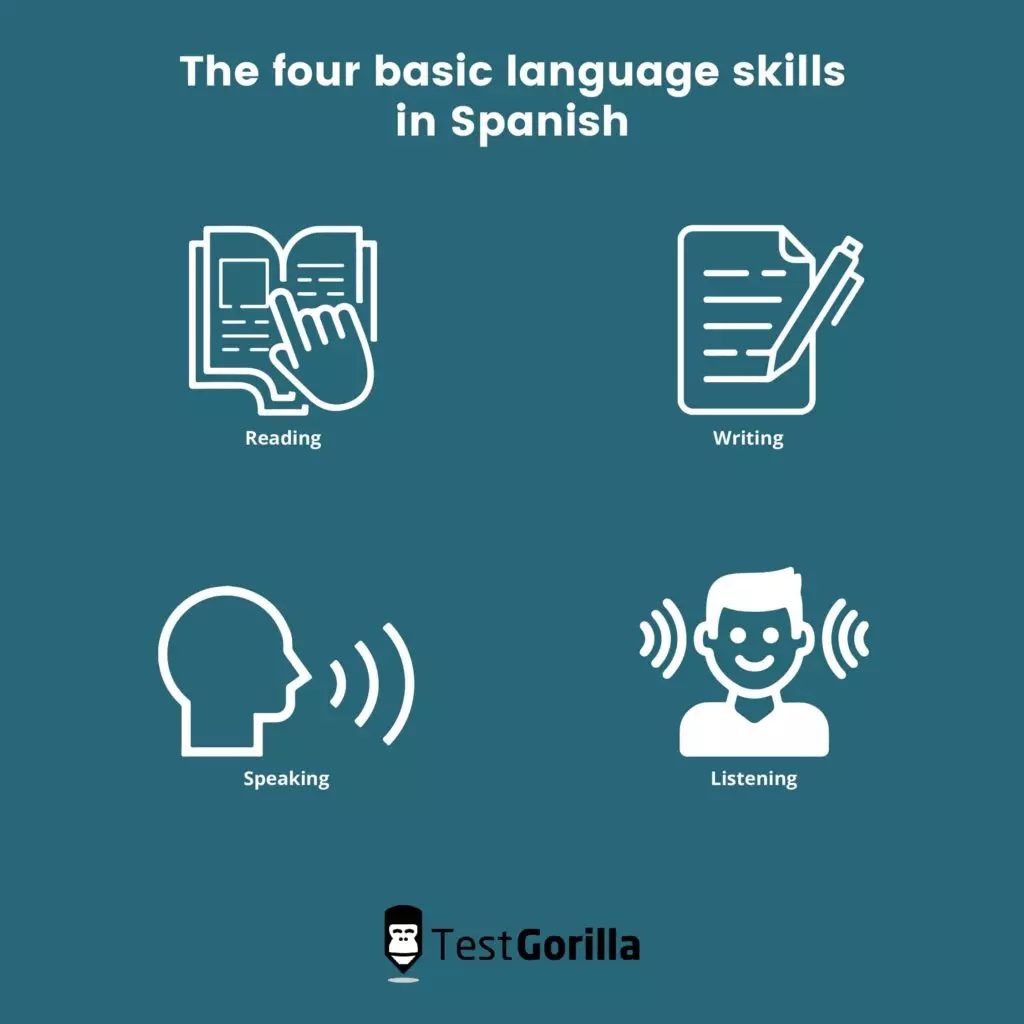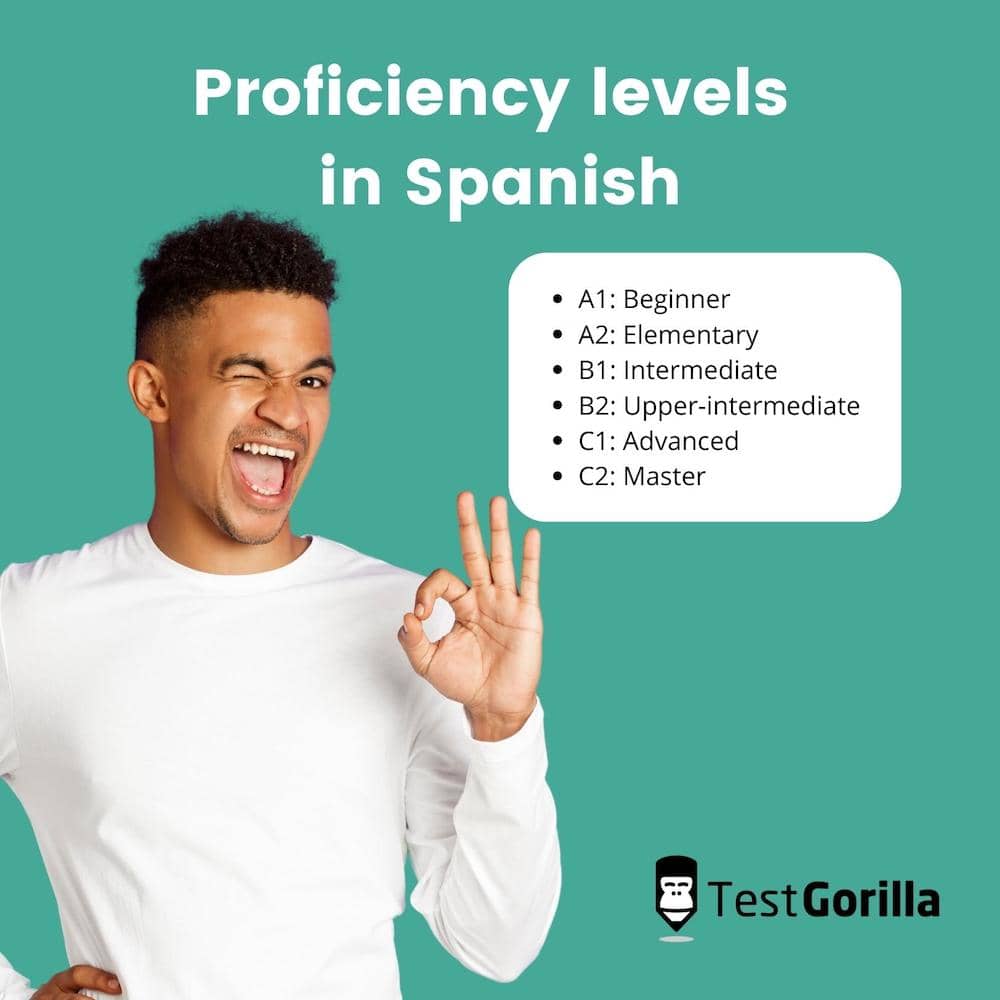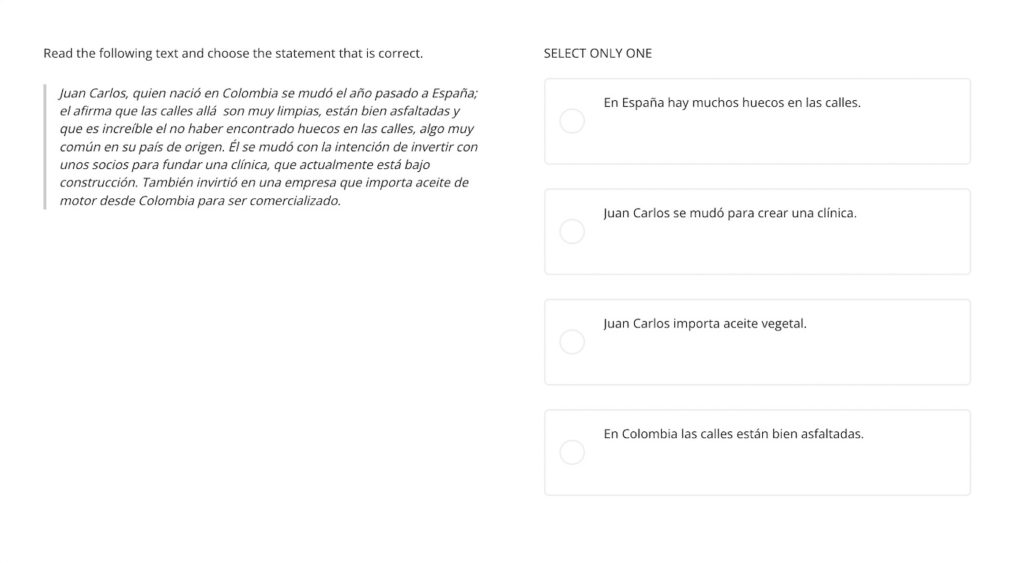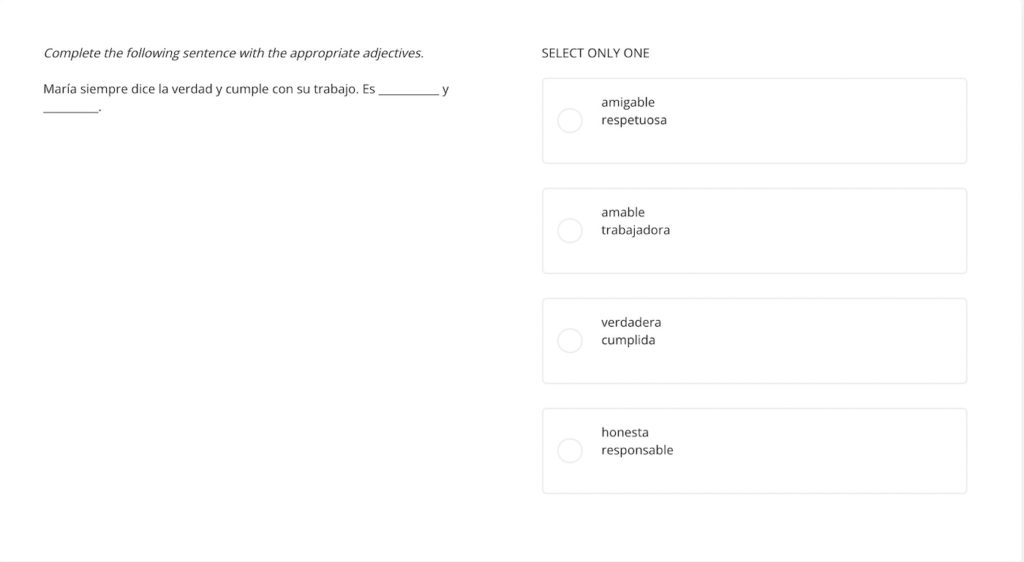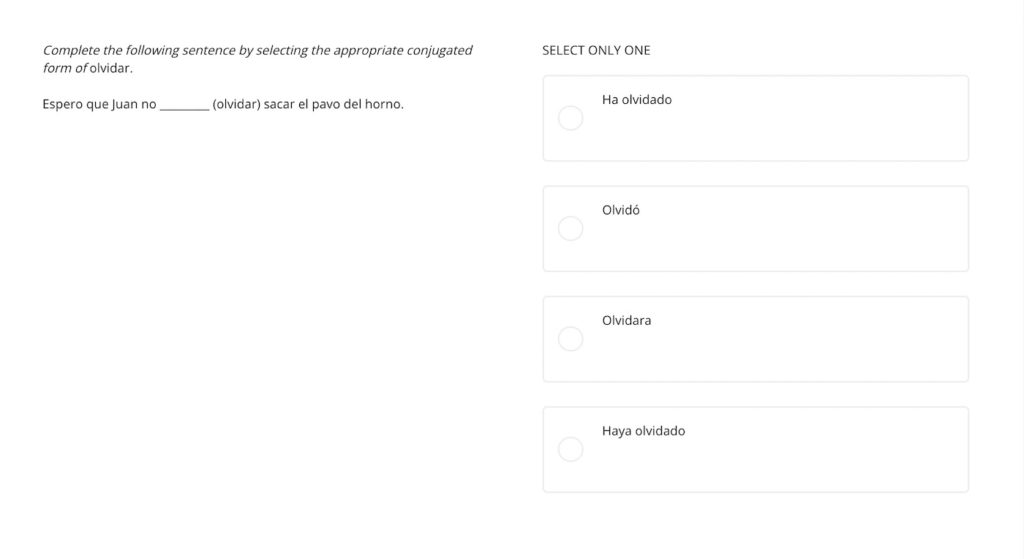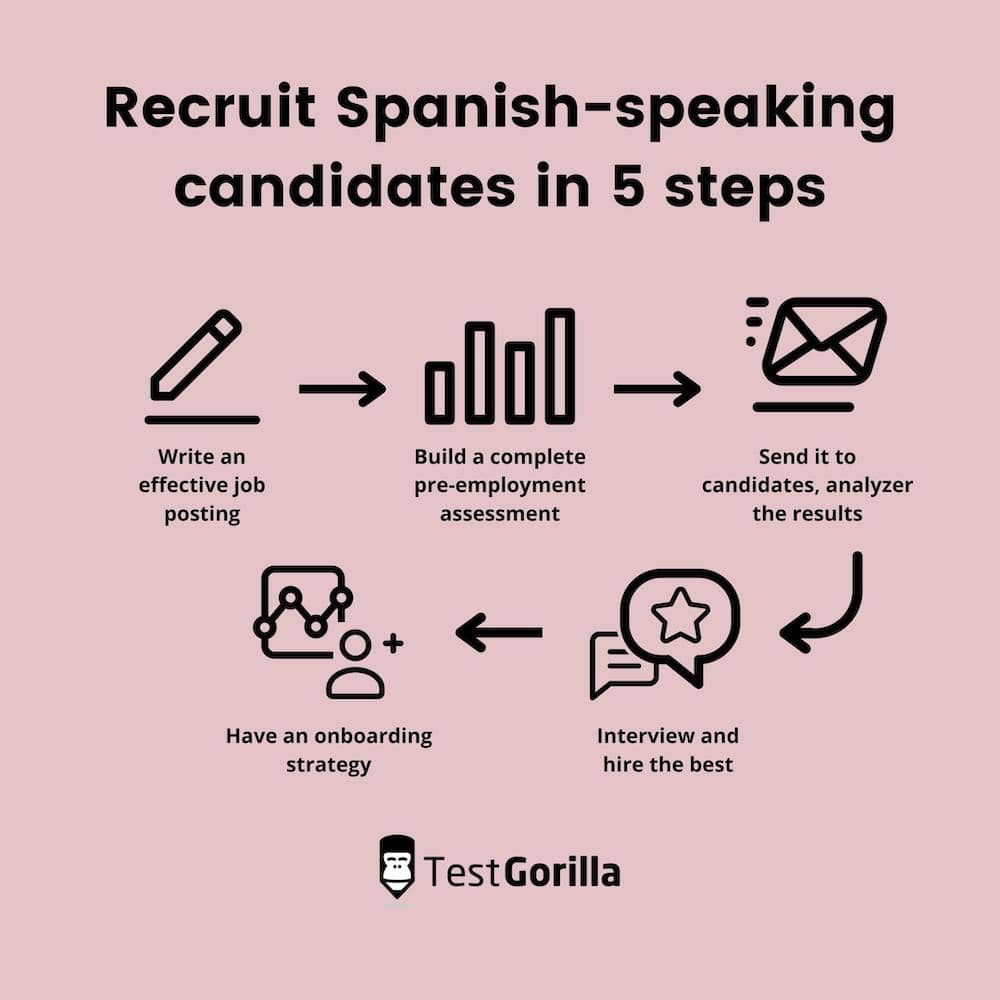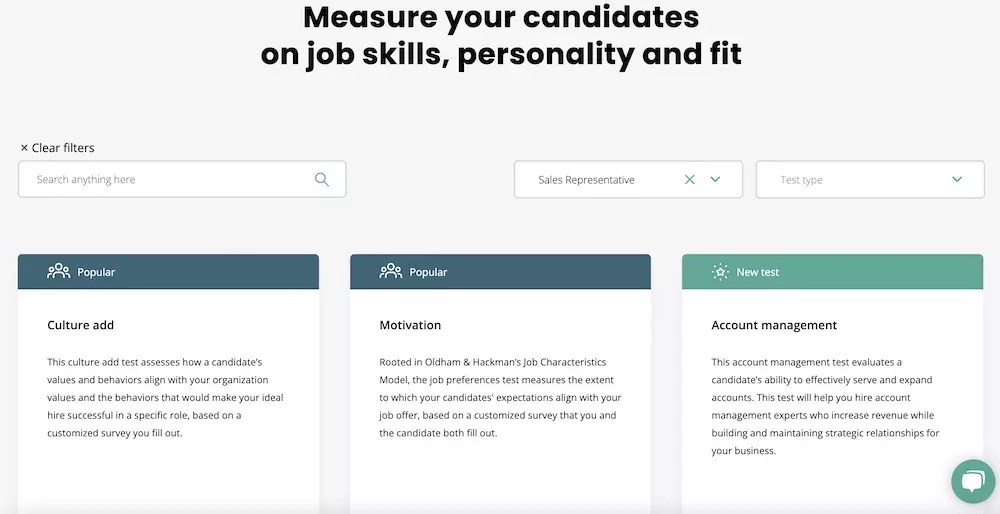Languages are a big deal. There are roughly 6,500 languages being spoken in the world today, and each and every one is unique.
Spanish is spoken by 559 million people globally: It’s the second most spoken language in the world (by number of native speakers), and it’s in high demand in bilingual workplaces.
In a recent study, Preply, a top provider of online language learning, scanned 1.5 million job listings. They found that speaking Spanish is likely to give you the most opportunities, with 152,000 of 750,000 U.S job ads for bilingual employers seeking Spanish-speaking employees.
So, if you’re here because you’re looking for Spanish-speaking employees, you’re definitely not alone. Read on to find out more about identifying and hiring Spanish-speaking job candidates.
Table of contents
There’s an increasing demand for language skills
Communication skills have long been golden to employers, so it’s hardly surprising that foreign language skills are in demand – someone who can communicate effectively in more than one language can bring a lot of value to businesses.
This is especially true since the pandemic – employees can now work from anywhere in the world. In fact, bilingual remote work opportunities have increased by 30% since the start of Covid 19.
Being multilingual also signals to employers that you’re likely to have other characteristics such as versatility, ambition, and sensitivity to other cultures
Daniele Saccardi, Campaigns Manager for Preply
There are financial benefits for employees, too. According to estimates from Georgia State University’s Global Language and Skies Program, bilingual employees earn $1.22 to $2.33 more per hour than monolingual employees.
The more languages you speak, the more opportunities you have and the more money you can earn. And whilst other job markets are struggling, data from the US Department of Labor suggests the employment of interpreters and translators is set to grow 24 percent from 2020 to 2030.
Spanish is the most in-demand language among U.S employers
Over 75% of US bilingual job listings analyzed by Preply are seeking Spanish-speaking candidates, making it the most marketable and in-demand language by far.
And bilingual work isn’t just for translators and interpreters, so this increasing demand for multilingual talent doesn’t impact language professionals alone.
Companies that provide services requiring a lot of human interaction, such as those in the finance and health care industries, are increasingly seeking bilingual and multilingual employees.
Additionally, today we see businesses seeking multilingual individuals to fill managerial, sales, and software development positions as more of them begin to operate globally.
How can I test for Spanish proficiency?
So, what steps can you take to hire the best Spanish-speaking candidates? And how can you tell if their Spanish is as good as they say it is on their CV?
The answer: You can identify candidates with the right level of Spanish proficiency you should use pre-employment tests. With a valid and reliable assessment, like the ones in TestGorilla’s test library, you can measure language skills in candidates and avoid the stress and bias that comes with CV-based hiring. Once you decide to make your hiring processes skills-based, you’ll never go back to resumes.
Let’s focus on testing for Spanish proficiency. The word proficiency is thrown around a lot. But what does it really mean?
Proficiency versus fluency
The term “proficient” is overused and many people don’t bother to use it to define their true level of ability.
UNCW, ‘Determining Language Proficiency’
In short, proficiency is the ability to accurately use and understand a language. It differs from fluency because it doesn’t necessitate the fluidity with which native speakers of a language can communicate.
You can have a rusty Spanish accent and still technically be proficient in the language, so long as your grammar and vocabulary are on point when you’re reading, writing, speaking, or listening to the language. Fluency comes when your accent is barely recognizable and your speech flows smoothly.
To make things more confusing, it’s possible to be fairly fluent in a language but not proficient. If you can easily understand native speakers and be easily understood by them, but you use a restricted vocabulary and sometimes make grammatical errors, it’s likely you’re fluent but not highly proficient.
Language proficiency involves 4 key skills
To become proficient in any language, you have to work on the following skills:
Reading: How well can your candidates read and understand written text in Spanish?
Writing: How well can your candidates express themselves in written Spanish?
Speaking: How well can your candidates partake in conversations in Spanish?
Listening: How well can your candidates understand spoken Spanish?
Likewise, if you really want to know what your candidates’ language skills are like, you’ll need to test for all four.
Below, we’ve outlined the six levels of language proficiency as they’re defined by the CEFR or the Common European Framework of Reference for Languages. Each level considers competencies in all four of the skills listed above.
Proficiency levels in Spanish
A1: Beginner
At this level, candidates will be able to use and understand everyday expressions and basic phrases. For example, they might be able to introduce themselves and talk about where they’re from. They’ll be able to understand a minimal amount if people speak slowly and clearly in Spanish.
A2: Elementary
Candidates at the A2 level can understand expressions and vocabulary of immediate relevance, such as family information, directions, and local geography. They’ll be able to express themselves in simple terms and partake in routine tasks so long as exchanges are direct and familiar.
B1: Intermediate
Candidates with B1 proficiency can understand the main points of regularly encountered interactions: work, school, leisure, etc. They can likely deal with anything that might arise whilst traveling and give descriptions of plans, options, and explanations.
B2: Upper-Intermediate
At this level, candidates will be able to grasp the core ideas of complex text and spoken expressions, though they will likely have specialized fields of vocabulary where they can engage in more technical discussions. Interaction with native speakers is possible without strain. They can explain their viewpoints on topical issues.
C1: Advanced
Candidates at the C1 level have effective operational proficiency. They can read and understand long, demanding texts and recognize their subtleties. C1 candidates can express themselves fluently, using language flexibly for social, academic, and work-related purposes.
C2: Master
C2-level candidates can understand virtually everything they hear or read in the language. They’re able to express themselves fluently, spontaneously, and accurately, and can infer and relate implicit meanings in complex situations.
TestGorilla offers 3 Spanish language tests
At TestGorilla, we want to help you hire top candidates without the risks of mis-hires or biased recruitment that come with sifting through CVs.
If you’re looking to hire a bi- or multilingual Spanish-speaking candidate who can hold their own with the language in a professional environment, you should be looking for someone who is at least level B1 proficient. We’ve collaborated with Spanish language experts to build three Spanish tests for recruiting candidates at levels B1, B2, and C1.
Spanish (Intermediate/B1) test: Helps you hire employees who can communicate in Spanish on everyday subjects commonly encountered at work and at home.
Spanish (Upper-Intermediate/B2) test: Helps you hire employees who can communicate fluently in Spanish and understand a range of specialized topics.
Spanish (Proficient/C1) test: Helps you hire employees who can partake in demanding social and professional conversations in Spanish.
More about the Spanish B1 test
B1 is probably the most commonly sought-out proficiency level for employers, since there are a higher number of candidates who meet this level of expertise, and they can communicate well enough to navigate most professional situations in Spanish. Additionally, using the language in a working environment tends to improve speaking, listening, reading, and writing skills considerably.
You can use TestGorilla’s Spanish B1 test to hire customer support agents, sales reps, or any other role that requires an intermediate level of Spanish.
The test covers the following Spanish language skills at an intermediate level:
Basic grammar
Vocabulary and spelling
Reading comprehension
Listening comprehension
Candidates will have ten minutes to complete the test. If they perform well, they’ll be able to communicate effectively and comfortably with customers, colleagues, and other stakeholders in Spanish. The test content mimics real-life situations and includes simple, connected sentences on generally familiar topics.
If your business operates in Latin America, sells products and services in Spanish-speaking countries, or is trying to break into a Spanish-speaking market, then this is the test for you.
Below are some sample questions to give you an idea of what your candidates can expect from the test. They revolve around grammar and vocabulary, sentence composition, reading comprehension, and listening comprehension.
This question assesses candidates’ reading comprehension skills in Spanish
Here, candidates are tested on their Spanish vocabulary
This question measures Spanish listening skills
This conjugation question assesses Spanish grammar skills
You should use the Spanish B1 test in combination with other skills tests
It’s important to note that TestGorilla tests should not be used in isolation. You can’t evaluate your candidates effectively if you’re looking at their Spanish B1 skills alone.
Build a complete pre-employment assessment using up to five tests from our test library. Choose which tests you want to use based on the job role you’re hiring for and the things that are important to your organization.
If you’re a start-up looking for candidates with great culture-add potential, for example, try our Culture-Add test. If it’s a customer-facing role, you could use the Customer-Service test too. Here are a few more examples of what you might like to use alongside the Spanish B1 test:
Communication test: Evaluates candidates’ skills in communicating clearly and effectively using professional etiquette
Motivation test: Measures the extent to which your candidates’ expectations align with your job offer, based on a customized survey you both fill out
Email Skills (Gmail) test: Helps you identify candidates who understand basic email processes and best practices for business contexts
Negotiation test: Assesses your candidates’ ability to negotiate in business contexts and advance your business interests
Next, let’s break down how you can integrate the Spanish B1 test into your hiring practices by using a complete pre-employment assessment.
Recruit Spanish-speaking candidates in 5 steps
1. Write an effective job posting
The first thing you’ll need to do is write an effective job posting.
Sounds simple, right?
Research shows that although 72% of hiring managers claim that they provide clear job descriptions, only 36% of job applicants agree that this is the case. So the chances are it’s harder than it looks. Here are some general pointers. An effective posting includes 5 key things:
Job title and responsibilities
Expected duties of the future employee
Required skills and qualities
Info on the nature of the position (e.g. remote, part-time)
Details on the compensation plan
Use these as your foundation. Build on them by giving applicants some context for the job they’re applying for.
it goes without saying that if you’re looking for a multilingual employee you should specify which languages you need them to speak. To improve your posting, ask yourself the following: What’s the company like, and what are its values? What are the working conditions like? Are you offering any unique benefits?
Competition is fierce for top talent, especially where language skills are concerned. We’ve kept it brief for you here, but you can read our guide to writing great job descriptions to make sure your posting attracts the best candidates.
2. Build a complete pre-employment assessment
Once your job posting is up, you’ll need to build a complete pre-employment assessment according to the guidelines that appear earlier on in this blog post.
Since you’re hiring for Spanish proficiency, the Spanish B1 test should definitely make up part of your assessment. Think about which other skills are important for the job, and get building. If you get stuck, you can search for job roles within our test library to get some recommendations.
Ideally, you’ll have a mixture of skills tests as well as a language test. You can also add custom questions to any assessment. Ask qualifying questions or use them to get to know your candidates a little better.
3. Send it to your candidates and analyze the results
Once you’ve finished building your assessment with TestGorilla, you can choose to invite your candidates in two ways:
Send a public link: We’ll provide a URL that you can copy and paste into a personal email or onto a job board. Invite candidates your way.
Send an email: You can enter the names and email addresses of your candidates and we’ll send them an automated email invitation (which you can customize) to take the assessment.
When the results are in, review them to create a shortlist. See who your top applicants are at a glance using the averages shown on the main candidate page, or use our tools to analyze candidate results in more depth.
4. Interview and hire the best
As soon as you’ve created your shortlist, it’s time to invite your remaining candidates to interview.
What do you want to get out of these interviews? Will you take a structured or unstructured approach? Do you want to use the interview to further assess their Spanish B1 skills?
If you’ve got candidates who scored highly on skills tests but didn’t do as well as others on the language test, this could be your chance to ensure their Spanish is good enough for you to hire them. Why not conduct the final interview in Spanish?
After you’ve analyzed your candidates’ test results and conducted interviews with those who made the shortlist, you should have an idea of who you want to hire. Here are some best practices to adhere to once you’re ready to make that job offer:
Don’t delay: Make the offer as soon as you can, preferably on the day of the final interview if you’re certain about your decision. Waiting to hear back can be stressful, and your candidate might be waiting to hear about other jobs, too.
Always call: This way, you can convey your enthusiasm and go into detail about why you want to offer them the job. You’ll also be better able to gauge how they feel about the offer.
Be thorough: If they accept your offer, this marks the beginning of your relationship with them. Communicate well; set the tone by offering positive feedback and being thorough about the details of the offer.
Ask questions: Never miss an opportunity for feedback. How did they feel about the application process? What could have been better?
Follow up: Always follow up in writing, whether they accept the offer or not. A detailed email gives them all the offer information in one place and clarifies any next steps.
5. Have an onboarding strategy
Hopefully, your top candidate accepts your job offer. If you’re at this stage, then great! But don’t relax just yet. The recruitment process isn’t quite over – you still need to effectively onboard your new employee.
Onboarding is important. Research by Brandon Hall Group found that organizations with great onboarding strategies improved their hire retention by 82%, so it’s certainly something worth investing in.
To reap the benefits of a great onboarding plan, you need to be organized and empathetic. Create an onboarding checklist, and check in with your new recruit regularly to make sure they have everything they need to settle in. Ensure they feel heard, and be patient with them – it can typically take five to eight months for a new hire to reach full productivity.
Hire the best with TestGorilla’s Spanish B1 test
In case you hadn’t already heard, the future of hiring is skills-based. And it’s bright!
Hiring processes as they stand are unreliable and unfair. They lead to mis-hires and encourage employment bias, costing recruiters time and money and compromising commitments to diversity.
With TestGorilla, you can simplify your hiring processes by evaluating your candidates’ skills before you do anything else. Unlike skills tests, education and work experience can’t predict job success, so you’re saving yourself time and hiring the best talent. It’s a no-brainer.
With language skills in such high demand, language tests are key to hiring top talent for bi- and multilingual roles. Sign up with TestGorilla to try our Spanish B1 test – and if you’re not convinced yet, you can always book a demo with our sales team.
Related posts
Hire the best candidates with TestGorilla
Create pre-employment assessments in minutes to screen candidates, save time, and hire the best talent.
Latest posts
The best advice in pre-employment testing, in your inbox.
No spam. Unsubscribe at any time.

Hire the best. No bias. No stress.
Our screening tests identify the best candidates and make your hiring decisions faster, easier, and bias-free.
Free resources
This checklist covers key features you should look for when choosing a skills testing platform
This resource will help you develop an onboarding checklist for new hires.
How to assess your candidates' attention to detail.
Learn how to get human resources certified through HRCI or SHRM.
Learn how you can improve the level of talent at your company.
Learn how CapitalT reduced hiring bias with online skills assessments.
Learn how to make the resume process more efficient and more effective.
Improve your hiring strategy with these 7 critical recruitment metrics.
Learn how Sukhi decreased time spent reviewing resumes by 83%!
Hire more efficiently with these hacks that 99% of recruiters aren't using.
Make a business case for diversity and inclusion initiatives with this data.

